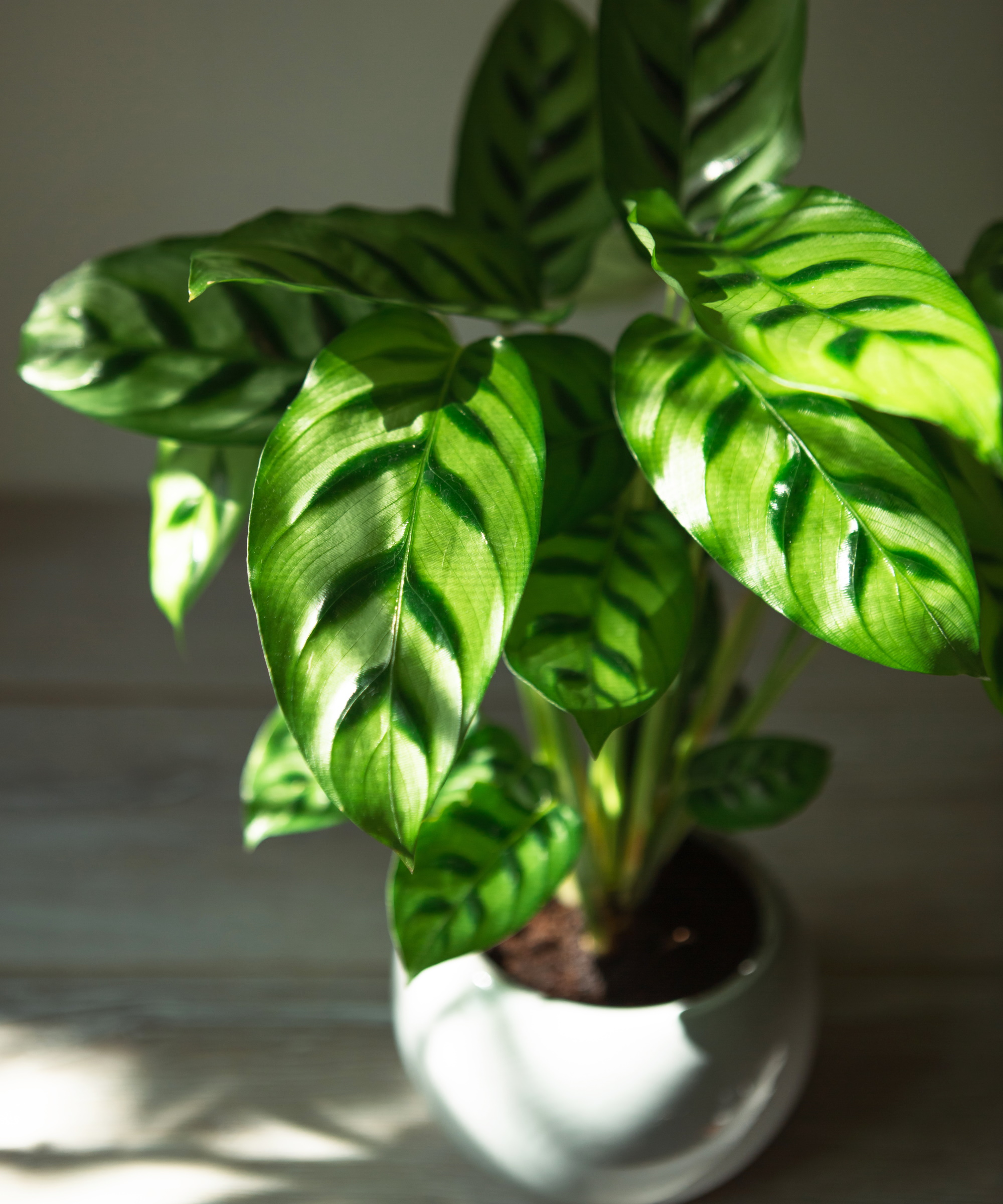
Calathea plants are loved for their magnificent foliage. There are many different varieties, but each is magnificently beautiful, with striking green leaves that look as though they have been painted with a paintbrush. Calatheas are also commonly known as prayer plants because they close their leaves up at night in a wonderful prayer formation.
Certainly, calatheas are one of the best indoor plants for delivering maximum visual impact. That said, if you're on the prowl for easy-to-care-for, hassle-free plants, calathea does not have the best reputation for being easy-going and low maintenance. However, once you know a little bit more about the likes and dislikes of this plant, you can easily create an environment in which your calathea plant will reach its full potential. Part of this secret lies in the potting soil mix for calathea. Get this wrong, and you're already starting on the wrong foot.
It's surprisingly easy to make your very own potting soil mix for calathea. Here, houseplant experts share an easy nutrient-rich calathea potting mix recipe to try at home, as well as tips on how to water a calathea correctly and how often to use fertilizer.

For the perfect calathea potting mix recipe you will need:
- Houseplant potting soil - like this houseplant potting soil from Amazon
- Coco coir - like this coco coir from True Leaf Market
- Perlite - like this perlite from Nature Hills
- Orchid bark - like this orchid bark from Amazon
Start with the houseplant potting soil and add each of the other ingredients to it. Aim (approximately) for the following ratios:
20% houseplant potting soil
25% coco coir
25% perlite
30% orchid bark
'The houseplant potting soil mix provides a good base, already formulated to support the growth of indoor plants with good drainage and essential plant nutrients.' explains Tenielle Jordison, houseplant expert and Gardens News Writer at Homes & Gardens.
'The coco coir is an eco-friendly alternative to peat moss,' Tenielle explains. 'It retains moisture and gradually releases it to calathea roots as they need it, so they don’t become too dry. I like to then mix in perlite and orchid bark as amendments for extra drainage. Both create air pockets, so excess water can drain away. They also allow for air flow, supporting healthy root growth.'
'Avoid using a potting mix that is too heavy and doesn’t drain well,' advises houseplant expert Lisa Eldred-Steinkopf. Lisa notes that using tap water is one of the most common calathea mistakes. 'Use distilled water or rainwater, as calatheas do not like fluoride in their water - it affects their leaves by leaving ugly brown marks.'
'Whilst the potting soil mix needs to retain moisture, it absolutely must allow the plant to access plenty of oxygen around its roots. It needs to drain quickly so the plant isn’t standing in water or has soggy soil around its roots,' she explains.
FAQs
Should you feed a calathea plant?
'During your calathea’s active growth season, in spring and summer, it can also be a good idea to add a fertilizer,' notes Tenielle. 'A commercially available calathea fertilizer (like this one from Amazon) is a good choice, or opt for an organic feed like worm castings.
'Use fertilizer approximately every fourth watering or so,' advises Lisa. 'You don’t have to use the whole amount called for on the label, but never use more. More is never better,' she warns.
How often should you repot a calathea?
'When making your own calathea potting mix, it's a good opportunity to repot it.' says Tenielle. There are several calathea varieties so it can be different for each one.
'How often you will need to repot depends on the type of calathea plant you have, but typically they require repotting every couple of years. Check the roots of the plant to see if they need more room; this is a great sign that it needs repotting.'
Despite having a reputation for being tricky houseplants, it is surprisingly easy to take care of them once you know how. They aren't necessarily an easy indoor plant to care for (the filtered water is a clue to just how high maintenance they are) but their needs are straightforward once you know.
As Lisa says, 'Calatheas need what every plant needs. They need the soil to anchor them firmly in the container, provide plenty of oxygen for their roots, have good water retention, but also good drainage.'







